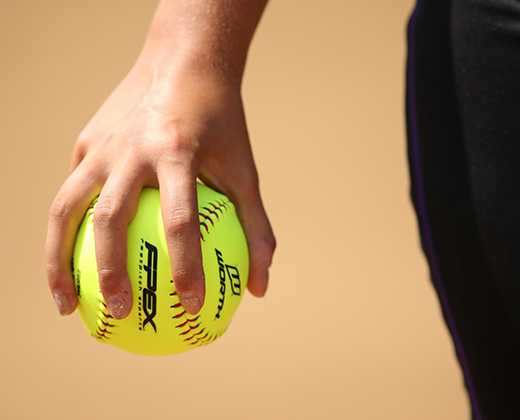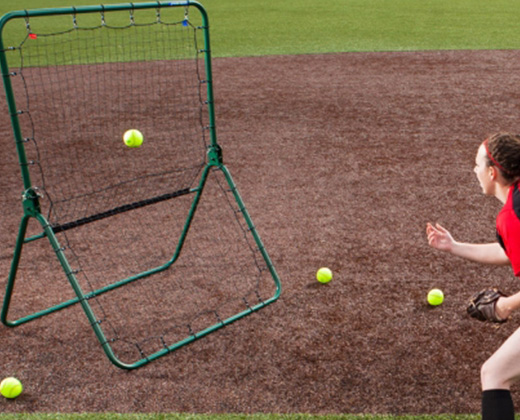Softball Pitch Types: The Curveball
An effective curveball can make your other pitches more dangerous.
If your softball team needs a twist of fate, it may be a good time to throw a curveball. The curveball is a breaking pitch thrown to the corner of the plate. Breaking pitches are those that do not travel in a straight line. After releasing it from the mound, the curveball takes a bowed and downward path toward the plate.
“It’s important to have good body positioning on this pitch, as well as commit to your wrist snap,” former professional softball player Jessica Vogel says. “That way we can throw this pitch with good movement, as well as being able to throw a first strike.”
CURVEBALL TIPS
When pitching a curveball, you toss the ball up and across your upper body. It is also important to get your legs involved in this motion.
The keys to curveball positioning are:
- Stride onto your power line: The power line is an imaginary line that goes from the pitching rubber straight to the plate. Your foot should be slightly over the line to create a sharp angle when you throw the pitch.
- Have a firm wrist: Having a firm wrist under the ball will allow you to break it across your body. To do this, pull your arm down with your elbow slightly bent. Think of your arm as a door hinge that you can open and close at a 90-degree angle.
- Create lift: To create the lift to help get your body up and across, you will need to bring your off foot close to your lead foot on the power line.
CURVEBALL SNAP DRILL
One way to work on your curveball is to practice the “Curveball Snap Drill.” To do so:
- Stand five to seven feet from your catcher.
- Isolate your forearm and fingers with a good grip on the ball.
- Throw from hip to hip, ensuring that your spin is tight and release point is consistent across your body.
- Repeat.
To learn more about throwing curveballs, check out these tips on how to grip and snap a curveball.








